Base de Datos de las Especies de Galápagos
La Base de Datos de las Especies de Galápagos comparte la información de las especies de nuestras Colecciones de Historia Natural.
Certhidea olivacea
Pinzón Reinita Verde, Pinzón cantor verde, Green Warbler Finch
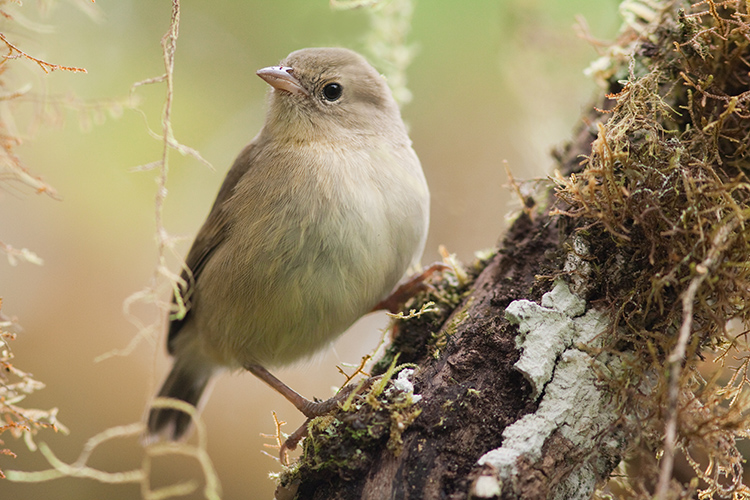
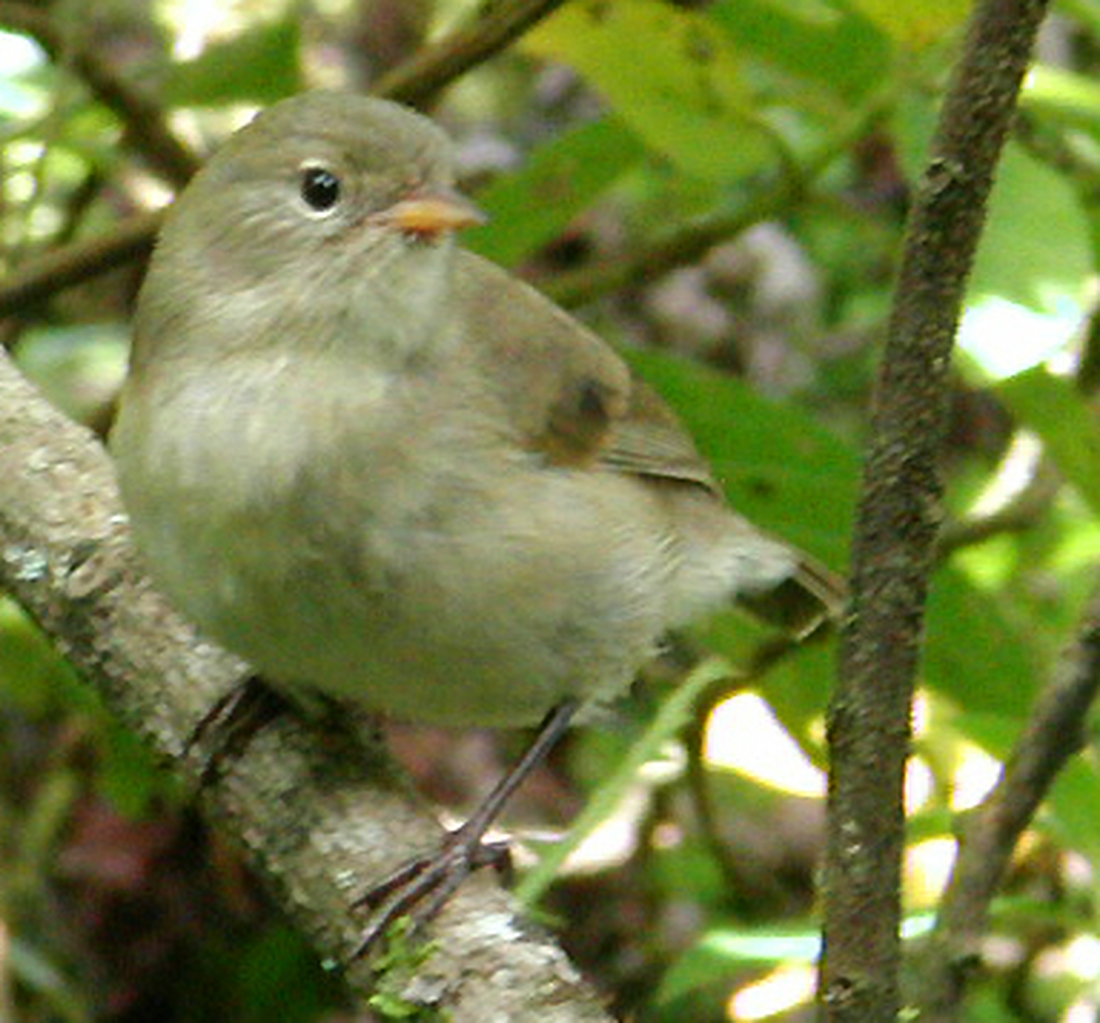
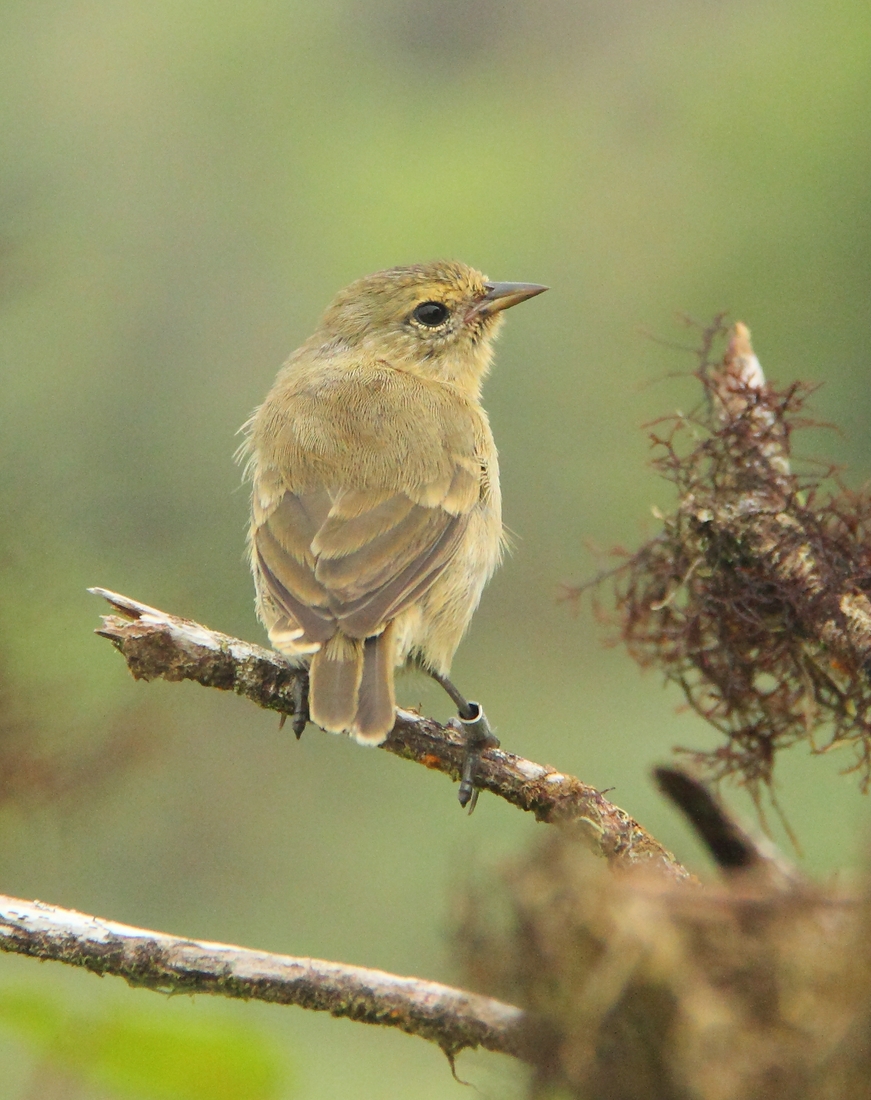
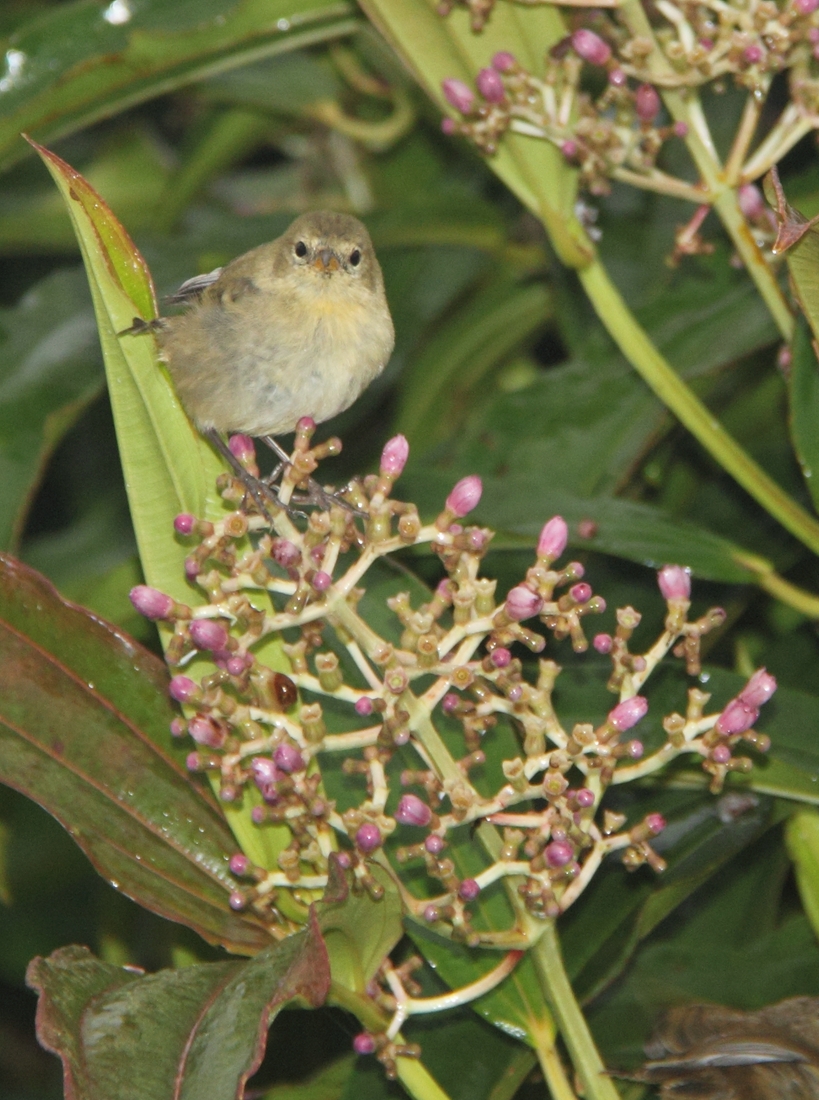
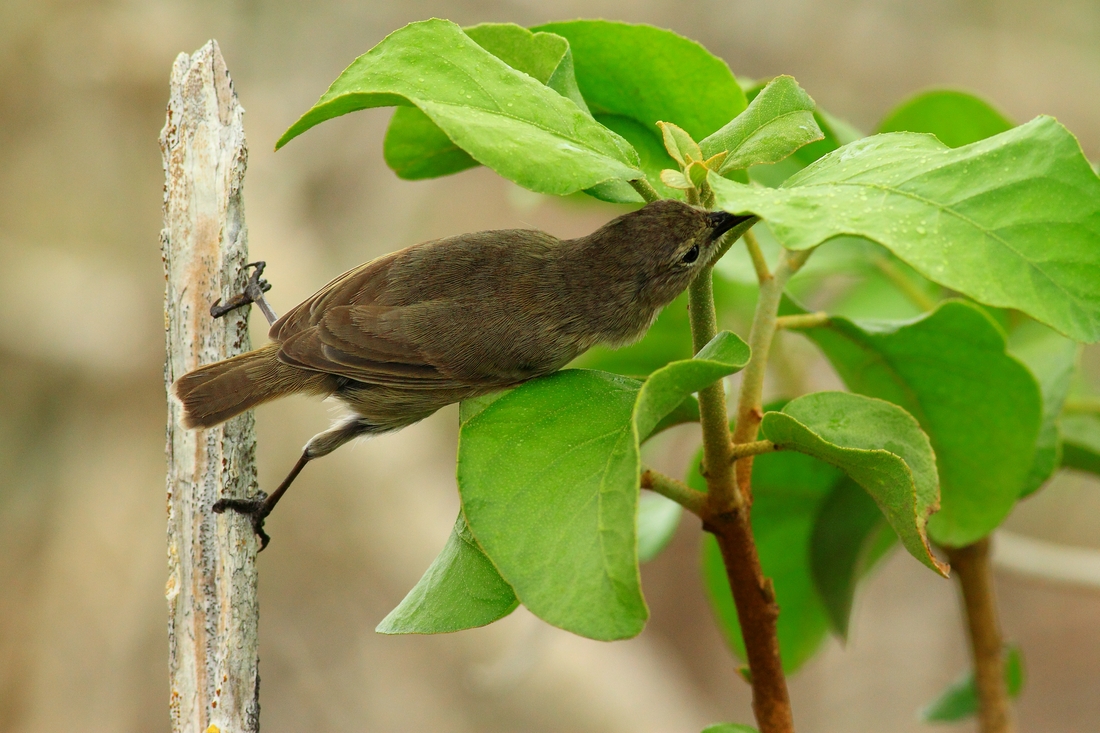
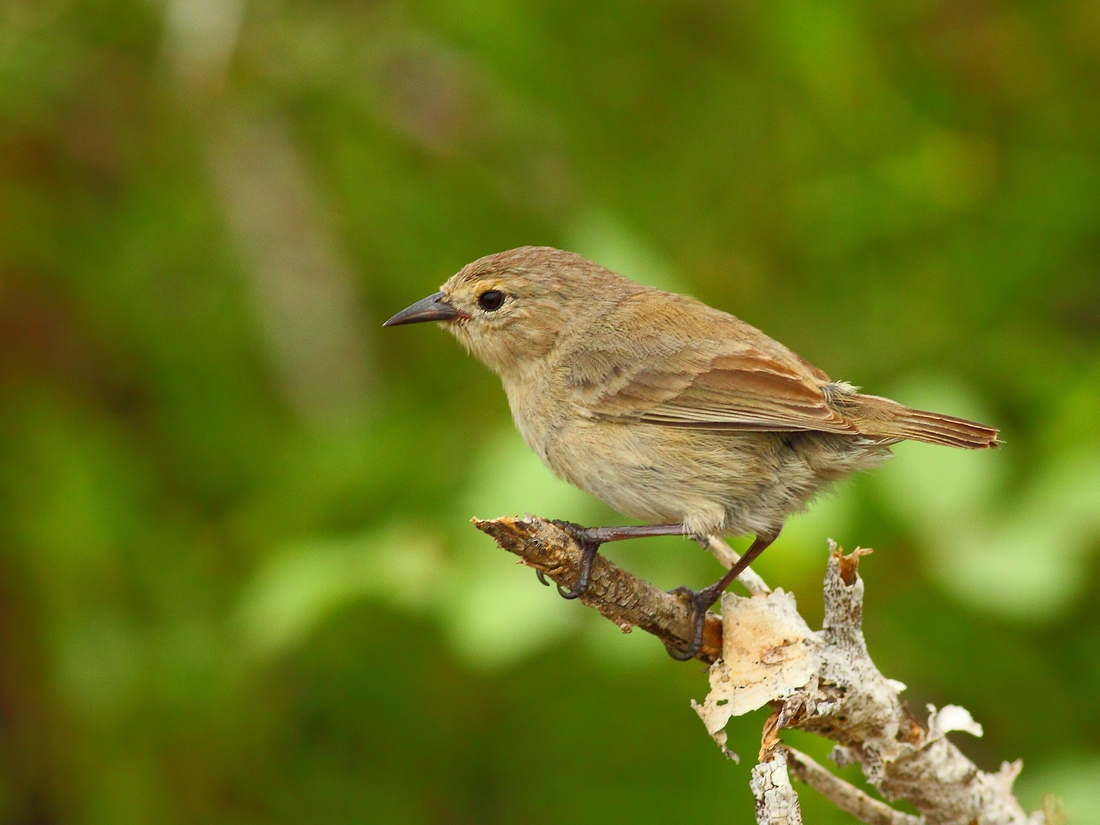

Se trata del más pequeño de los pinzones de Darwin, aprox. 8 gramos, y con el pico más fino.
Amenazas Al parecer está fuertemente afectado por la mosca parasita introducida Philornis downsi, particularmente en conjunto con las lluvias Fuertes cuando los padres no son capaces de sobre alimentar a los pichones para compensar la pérdida de sangre. También se encontró un incremento de la prevalencia de Viruela Aviar en esta especie.
Dominio
Eukaryota
Reino
Animalia
Filo
Chordata
Clase
Aves
Orden
Passeriformes
Familia
Thraupidae
Género
Certhidea
Especie
olivacea
Categoría de taxón: Aceptado
This species is closely related to the Grey Warbler Finch, and were formerly considered conspecfic, but both species differ in appearance, distribution, habitat, and song. Syn.: Certhidea olivacea ridgwayi Rothschild & Hartert, 1899, Certhidea olivacea olivacea Gould, 1837, Certhidea olivacea mentalis Ridgway, 1894, Certhidea olivacea luteola Ridgway, 1894, Certhidea olivacea cinerascens Ridgway, 1890, Certhidea olivacea bifasciata Ridgway, 1894, Certhidea olivacea becki Rothschild, 1898.
Origen: Endémica
Preferencia de zona de altitúd en Galápagos: Zona seca - zona húmeda
Preferencias de substrato o huésped: Forrajea en los árboles y arbustos buscando artrópodos, explora el follaje, busca en los musgos (sobre todo en temporada seca), busca en hojas terminales y epífitas.
Papel trófico: Carnívoro
Biología reproductiva: El macho se exhibe en frente de un nido cerrado que construyo solo. Cuando la hembra lo escoge como pareja , usan este nido, o juntos construyen uno nuevo. La hembra pone 2-3 huevos, incuba sola pero ambos alimentan los pichones. Cada pichón se queda con uno de los padres hasta 6 semanas.
Distribución: C. olivacea se encuentra en las islas centrales y occidentales más grandes. Está presente en las islas Pinzón, Fernandina, Isabela, Rábida, Santa Cruz y Santiago.
- Alatalo, R. V. (1982) Bird Species Distributions in the Galapagos, Ecuador, and Other Archipelagoes: Competition Or Chance?. Ecology 63 (4): 881-887
- Bisconti, M. Landini, W., Bianucci, G., Cantalamessa, G., Carnevale, G. Ragaini, L. & Valleri, G. (2001) Biogeographic relationships of the Galapagos terrestrial biota: parsimony analyses of endemicity based on reptiles, land birds and Scalesia land plants. J. Biogeogr. 28: 495-510.
- Cimadom, A. Ulloa, A., Meidl, P., Zöttl, M., Zöttl, E., Fessl, B., Nemeth, E., Dvorak, M., Cunninghame, F. & Tebbich, S. (2014) Invasive parasites, habitat change and heavy rainfall reduce breeding success in Darwin’s Finches. Plos One 9:e107518.
- Dvorak, M. Fessl, B., Nemeth, E., Kleindorfer, S.M., & Tebbich, S. (2012) Distribution and abundance of Darwin ́s Finches and other land birds on Santa Cruz Island Galapagos: evidence for declining populations. Oryx 46:78-86
- Farrington, H. Petren, K. (2011) A century of genetic change and metapopulation dynamics in the Galápagos warbler finches (Certhidea). Evolution 65:3148-3161.
- Farrington, H. Lawson, L., Clark, C. & Petren, K. (2014) The evolutionary history of Darwin's finches: speciation, gene flow, and introgression in a fragmented landscape. Evolution doi 10.1111/evo.12484.
- Fessl, B. Couri, M.S. & Tebbich, S. (2001) Philornis downsi Dodge & Aitken, new to the Galapagos Islands (Diptera, Muscidae). Studia Dipterologic 8: 317-322.
- Fessl, B. Tebbich, S. (2002) Philornis downsi - a recently discovered parasite on the Galápagos archipelago - a threat to Darwin's finches? Ibis 144: 445-451.
- Freeland, J. Boag, P. (1999) Phylogenetics of Darwin's finches: Paraphyly in the tree-finches, and two divergent lineages in the Warbler Finch. The Auk 116:577-588.
- Freile, J.F. Santander, T., Jiménez-Uzcátegui, G., Carrasco, L., Cisneros-Heredia, D., Guevara, E., Sánchez-Nivicela, M., Tinoco, B. (2019) Lista Roja de las aves del Ecuador Quito, Ecuador. 97 pp.
- Geladi, I. Henry, PY., Mauchamp, A., Couhenberg, P. & Fessl, B. (2021) Galapagos landbird conservation and agricultural landscape: how can we build bridges? Biodiversity and Conservation 30: 2181-2206
- Grant, B.R. Grant, P.R. (2002) Lack of premating isolation at the base of a phylogenic tree. The American Naturalist 160:1-19.
- Grant, P.R. Grant, B.R. (1987) Interacciones entre plantas y animales: consumo de semillas por los Pinzones de Darwin. Memorias. Investigación Botánica y Manejo en Galápagos. Pg.199-209
- Grant, P.R. Grant, B., Petren, K. & Keller, L (2005) Extinction behind our backs: the possible fate of one of the Darwin's finch species on Isla Floreana, Galápagos. Biological Conservation 122:499-503.
- Grant, P.R. Grant, B.R. (1980) The breeding and feeding characteristics of Darwin's finches on Isla Genovesa, Galapagos. Ecological Monographs 50:381-410
- Guerrero, A. Tye, A. (2009) Darwin's Finches as seed predators and dispersers. The Wilson Journal Of Ornithology 121 (4):752-764, 2009
- IUCN (2017) The IUCN Red List of Threatened Species Version 2016-3. <www.iucnredlist.org>. Downloaded on 03 February 2017.
- IUCN (2015) The IUCN Red List of Threatened Species. Version 2015-4. <www.iucnredlist.org>. Downloaded on 20 November 2015.
- Jiménez-Uzcátegui, G. Betancourt, F. (2008) Avifauna vs automotores. Informe Galápagos 2007-2008. FCD, PNG & INGALA. Puerto Ayora, Ecuador. p. 111–114.
- Jiménez-Uzcátegui, G. Milstead, B., Márquez, C., Zabala, J., Buitrón, P., Llerena, A., et al. (2007) Galapagos vertebrates: endangered status and conservation actions. Galapagos Report 2006–2007. Charles Darwin Foundation, Puerto Ayora, p. 104–110.
- Kleindorfer, S. Dudaniec, R.Y. (2006) Increasing prevalence of avian poxvirus in Darwin’s finches and its effect on male pairing success. Journal of Avian Biology 37: 69-76.
- Lamichhaney, S. Berglund, J., Sällman Almén, M., Maqbool, K., Grabherr, M., Martinez-Barrio, A., Promerova, M., Rubin, C.J., Wang, C., Zamani, N., Grant, B.R., Grant, P.R., Webster, M.T., Andersson, L. (2015) Evolution of Darwin’s finches and their beaks revealed by genome sequencing Nature 518: 371-386. doi:10.1038/nature14181
- Loyola, D.C. Placky, A., Fessl, B. & McNew, S.M. (2025) Novel microfilariae detected in Galápagos passerines International Journal For Parasitology: Parasites and Wildlife 28: 10115.
- Petren, K. Grant, P., Grant, B. & Keller, L. (2005) Comparative landscape genetics and the adaptive radiation of Darwin’s finches: the role of peripheral isolation. Molecular Ecology 14:2943-2957.
- Petren, K. Grant, B. & Grant, P. (1999) A phylogeny of Darwin's finches based on microsatellite DNA length variation. Proceedings of the Royal Society of London Series B-Biological Sciences 266:321-329.
- Remsen, J.V Cadena, C. D., Jaramillo, A., Nores, M., Pacheco, J. F., Pérez-Emán, J., Robbins, M. B., Stiles, F. G., Stotz, D. F., and Zimmer, K. J. (2012) A classification of the bird species of South America. American Ornithologists' Union http://www.museum.lsu.edu/~Remsen/SACCBaseline.html
- Remsen, J.V. Areta, J.I.Jr., Cadena, C.D., Claramunt, S., Jaramillo, A., Pacheco, J.F., Pérez-Emán, J., Robbins, M.B., Stiles, F.G., Stotz, D.F., Zimmer, K. J. (2016) A Classification of the Bird Species of South America. South American Classification Committee. American Ornithologists' Union http://www.museum.lsu.edu/~Remsen/SACCBaseline.htm
- Salvin, O. (1876) On the avifauna of the Galápagos Archipelago. Transactions of the Zoological Society of London 9: 447-510.
- Swarth, H.S. (1931) The Avifauna of the Galapagos Islands. Occ. Pap. Calif. Acad. Sci. 18: 1-299.
- Tonnis, B. Grant, P., Grant, B. & Petren, K. (2005) Habitat selection and ecological speciation in Galápagos warbler finches (Certhidea olivacea and Certhidea fusca). Proceedings of the Royal Society of London Series B-Biological Sciences 272:819-826.
- Wiedenfeld, D.A. (2006) Aves, the Galapagos Islands, Ecuador. Check List 2006 2(2): 1-27.
- Yang, S. Patton, J. (1981) Genic variability and differentiation in the Galápagos finches The Auk 98:230-242
- Zylberberg, M. Lee, K., Klasing, K. & Wikelski, M. (2012) Increasing avian pox prevalence varies by species, and with immune function, in Galápagos finches. Biological Conservation 153:72-79.
Se puede descargar y utilizar la información de esta página, reconociendo el origen de los datos.
Esta página debe citarse como sigue:
"Galapagos Species Database, Certhidea olivacea", dataZone. Charles Darwin Foundation, https://datazone.darwinfoundation.org/es/checklist/?species=5058. Accessed 30 October 2025.


Tipo de alimentación: Insectívoro